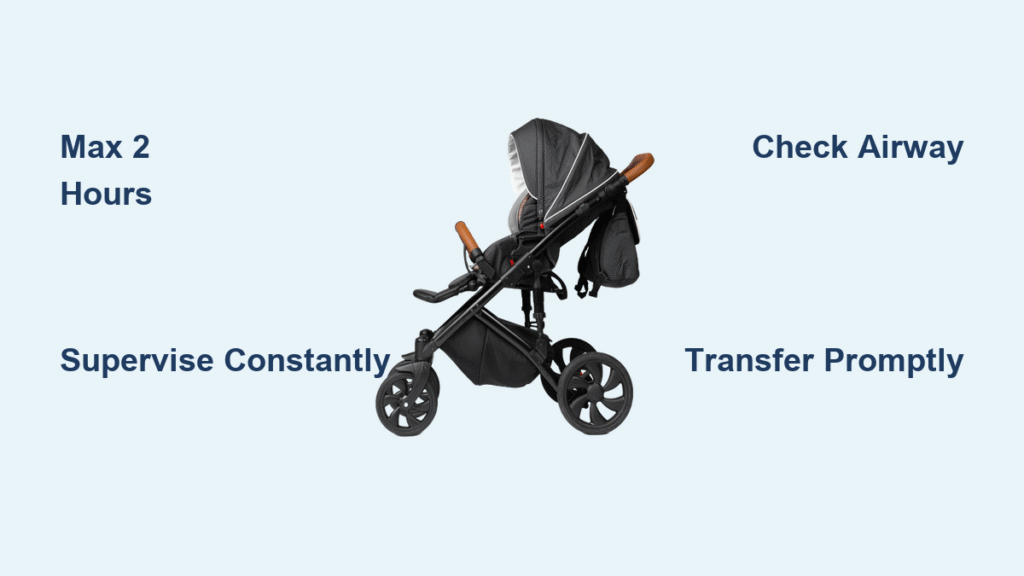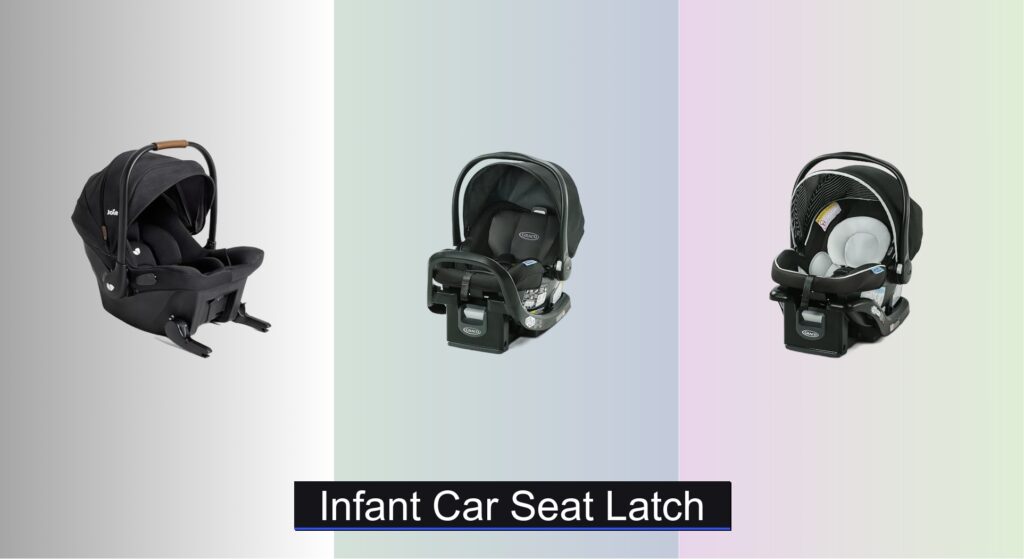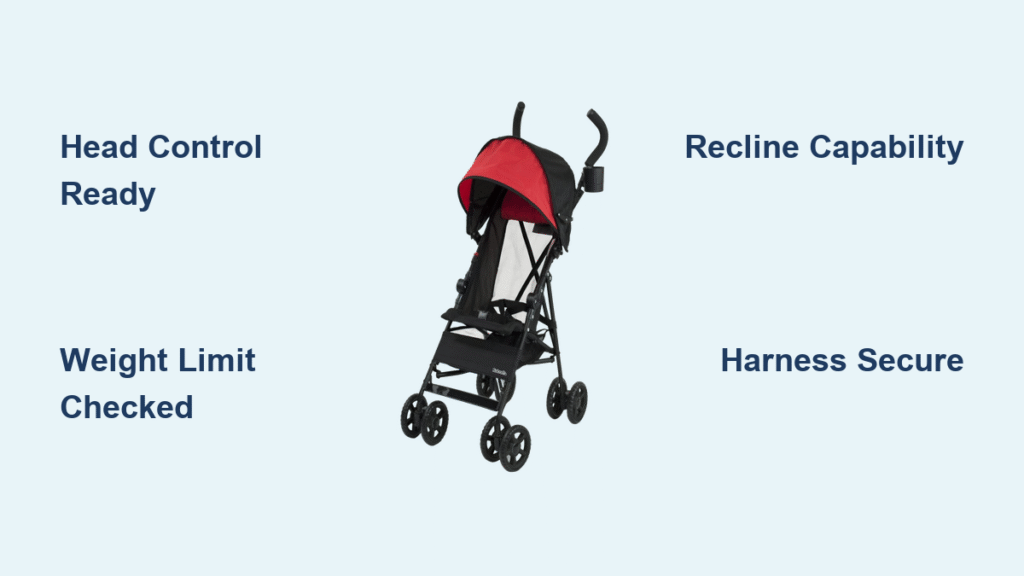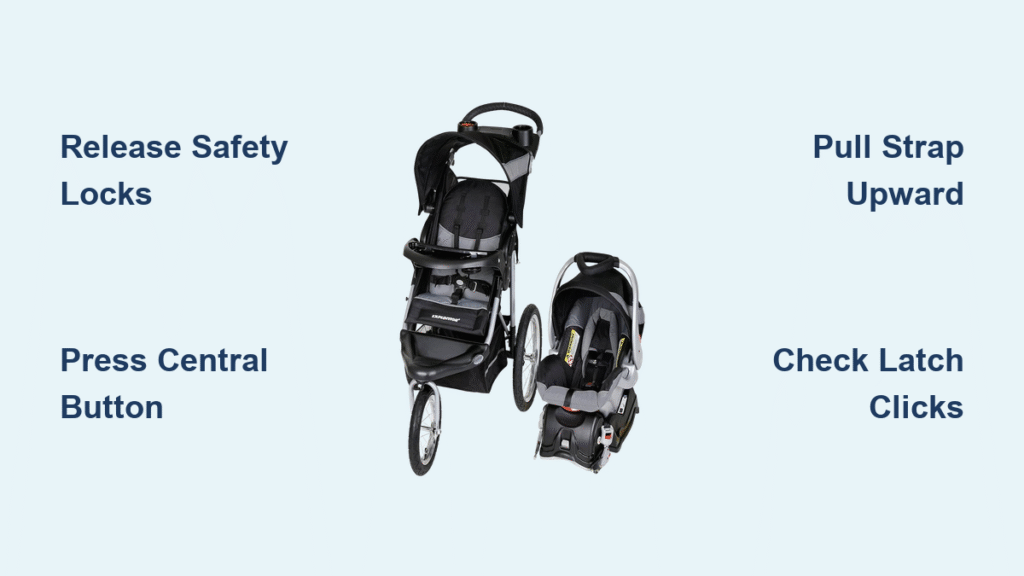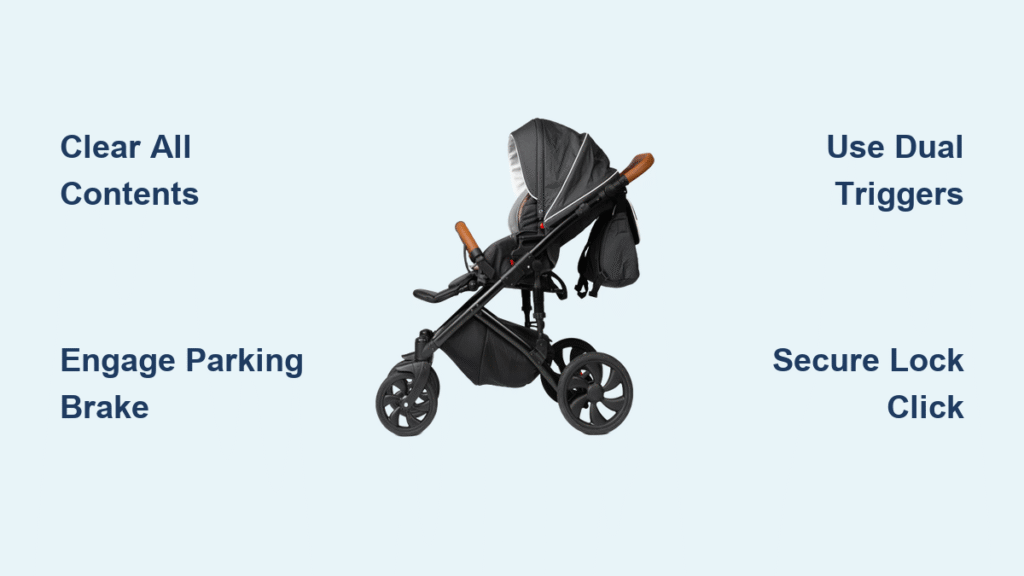That peaceful moment when your baby finally drifts off in the stroller during your morning walk is precious—but it comes with important safety considerations. As you stand there weighing whether to wake them for a transfer or sneak in one more errand, knowing the exact limits for safe stroller sleep becomes critical. The American Academy of Pediatrics and other safety authorities agree: your baby should never sleep in a stroller longer than 2 hours, regardless of age or stroller type.
Every parent faces this dilemma, and understanding these time limits helps you balance convenience with your baby’s safety. While stroller naps sometimes happen during daily routines, treating them as temporary solutions rather than regular sleep arrangements protects your little one from preventable risks. Let’s explore exactly how long babies can safely sleep in strollers across different configurations and what you need to watch for during those precious naps.
Why the 2-Hour Limit Applies to All Stroller Naps
The hard 2-hour maximum isn’t arbitrary—it’s based on physiological realities of infant development. When your baby sleeps upright in a stroller, their airway becomes more vulnerable to partial obstruction as neck muscles relax. After the 2-hour mark, oxygen circulation significantly decreases while positional asphyxiation risk increases, particularly for babies under 4 months who lack full neck control.
Critical Risks Beyond the 2-Hour Threshold
- Compromised breathing patterns as babies sink deeper into the seat
- Dangerous head positioning where chin drops to chest, narrowing the airway
- Overheating potential from trapped body heat in stroller enclosures
- Reduced oxygen saturation measurable within 90-120 minutes of continuous upright sleep
Practical Timing Strategies
Most stroller naps naturally fall within 30-90 minutes, making the 2-hour limit a safety boundary rather than a target. Set a phone timer for 90 minutes (leaving 30 minutes buffer) during outings to ensure you never accidentally exceed safe limits. This precaution gives you time to find a safe transfer location before reaching the critical threshold.
Stroller Type Safety Differences You Must Know

Infant Car Seat Stroller Frame Risks
Using your infant car seat on a stroller frame requires extra vigilance despite the familiar configuration. The same 2-hour rule applies, but these systems present additional concerns:
- Recline angle must match your vehicle’s installation (typically 45 degrees) to maintain proper airway positioning
- Head support needs constant adjustment as babies drift deeper into sleep without neck control
- Harness security requires frequent checking as shifting can create dangerous slack
- Visual supervision is non-negotiable—never step away while baby sleeps in the car seat
Standard Stroller Seat Configuration Guidelines
For babies over 3 months in regular stroller seats, maintain maximum safety by:
- Using newborn inserts until baby can hold head up steadily (typically 3-4 months)
- Ensuring full recline capability for younger babies who need near-flat positioning
- Engaging the 5-point harness every single time with no exceptions
- Checking positioning every 15 minutes to prevent airway compromise
Bassinet Attachment Safety Reality
Even with bassinet attachments that provide near-flat positioning:
- Overnight use remains prohibited while attached to the stroller frame
- Manufacturer approval is essential for any extended sleep claims
- Discontinue use immediately when baby shows signs of rolling or pushing to sit
- The 2-hour limit still applies despite improved positioning—flat doesn’t mean risk-free
Essential Safety Protocols During Stroller Naps

Continuous Supervision Requirements
True supervision means you’re within arm’s reach with your eyes on baby at all times—not just occasionally glancing over. This includes:
- Monitoring breathing patterns for any signs of struggle or irregularity
- Checking temperature by touching baby’s neck (not hands or feet) every 20 minutes
- Watching for positioning shifts that could compromise the airway
- Being prepared to transfer immediately if baby shows discomfort
Positioning Danger Signs to Watch For
Every 15 minutes during stroller sleep, verify:
- Head alignment remains slightly back with chin off chest
- Airway visibility stays clear of fabric, toys, or positioning aids
- Harness straps maintain snug fit without twisting or slack
- Color consistency with no bluish tint around lips or fingernails
Risk Factors That Shorten Safe Stroller Sleep Time
Medical Conditions That Reduce Safe Duration
Certain health factors require significantly shorter stroller naps:
- Premature babies need pediatric clearance before any stroller sleep
- Reflux issues may require more upright positioning and shorter durations
- Respiratory conditions demand immediate transfer at first sign of distress
- Recent illness can compromise breathing even after apparent recovery
Environmental Red Flags That Increase Danger
External factors can make stroller sleep unsafe within minutes:
- Direct sunlight exposure can raise internal stroller temperature by 20°F+ in 15 minutes
- Cold weather chills babies faster than adults due to higher surface area ratio
- Excessive covering (even light blankets) significantly increases suffocation risk
- High pollen days can trigger breathing difficulties in sensitive babies
Smart Transfer Techniques for Safe Sleep Transitions
When to Move Your Baby Immediately
Transfer to a safe sleep surface when:
- You reach your destination—don’t delay to “squeeze in” one more stop
- The 2-hour mark approaches regardless of how deeply baby sleeps
- Baby shows signs of discomfort like fussing, color changes, or positioning struggles
- You can’t maintain direct supervision due to circumstances or environment
Safe Transfer Destinations Checklist
Always have these approved sleep surfaces ready:
- Portable crib or Pack & Play with firm mattress for travel situations
- Firm bassinet meeting current safety standards at your destination
- Full-size crib at home or where you’re visiting
- Approved travel cot for older babies (verify age/weight requirements)
Long-Term Impact of Frequent Stroller Naps
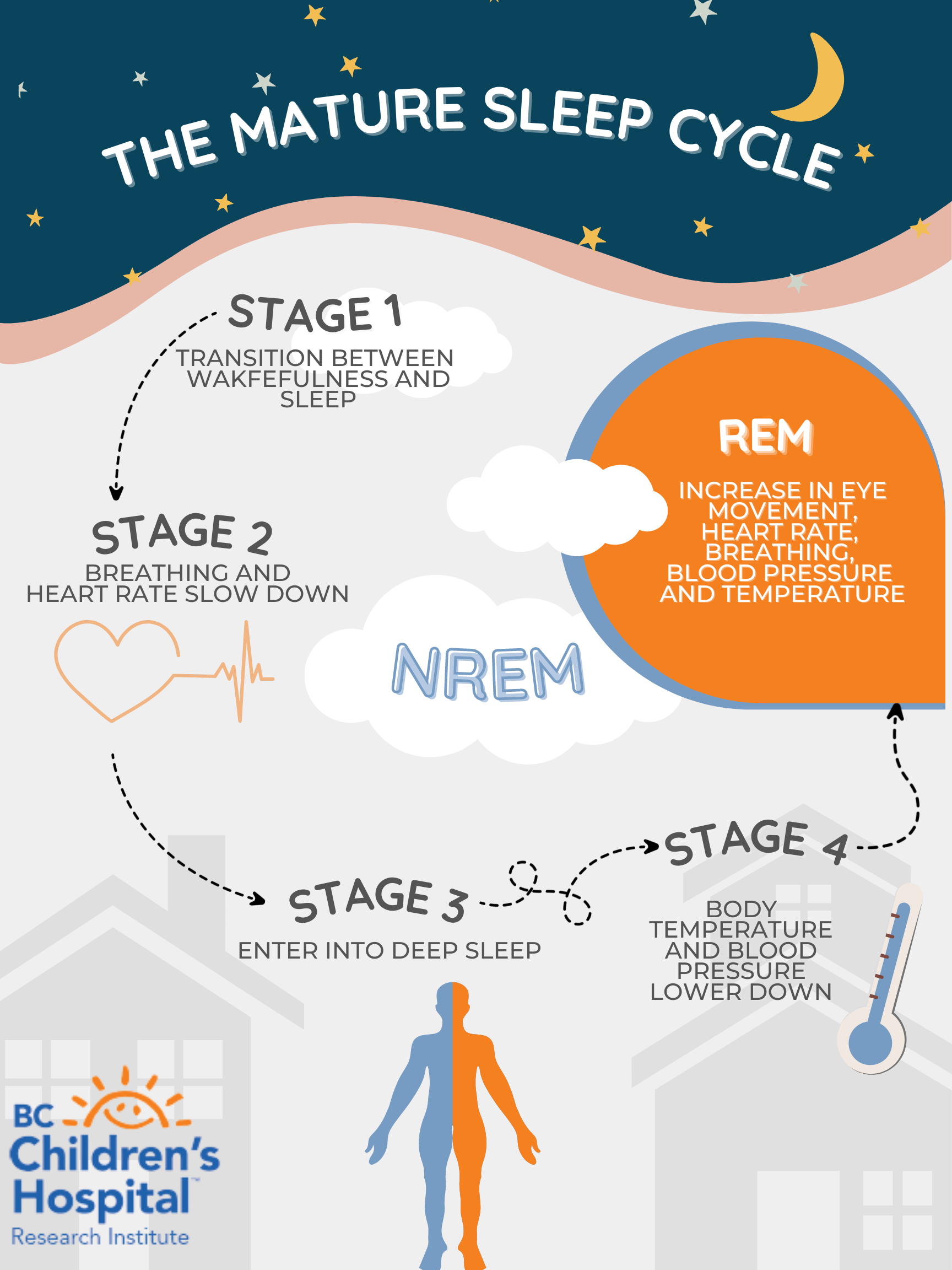
Sleep Development Concerns
Regular stroller naps can negatively affect your baby’s sleep patterns:
- Short sleep cycles (20-30 minutes) prevent restorative deep sleep
- Schedule disruption from irregular nap timing confuses circadian rhythms
- Motion dependency develops as a sleep association, making independent sleep harder
- Self-soothing delays occur because constant movement replaces natural settling
Strategic Benefits When Used Appropriately
When managed properly, occasional stroller naps offer developmental advantages:
- Adaptability training helps babies sleep in varied environments
- Parental mobility supports mental health and daily functioning
- Outdoor benefits include fresh air exposure and natural light regulation
- Social opportunities maintain parental connections and activities
Quick Reference Safety Checklist
Before every stroller nap:
– [ ] Set 90-minute phone timer (30-minute safety buffer)
– [ ] Verify proper positioning with airway clearly visible
– [ ] Confirm harness correctly fastened without twisting
– [ ] Check temperature appropriateness for conditions
– [ ] Establish continuous supervision plan
– [ ] Identify safe transfer destination
Final Note: While stroller naps sometimes feel unavoidable, they should never replace proper crib or bassinet sleep. The 2-hour limit exists for critical safety reasons, not as a recommendation for regular use. Your baby’s developing body needs flat, firm sleep surfaces for optimal breathing and development. When your little one drifts off during an outing, treat it as a temporary situation requiring immediate transfer to a safe sleep space upon reaching your destination. This simple practice keeps your baby safe while still allowing you the mobility modern parenting requires.

